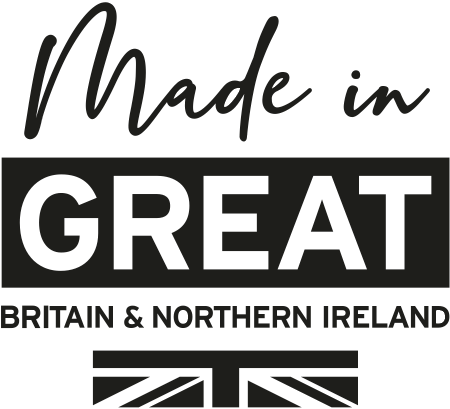Do you prefer an oaky Chardonnay or something steely and mineral? How about a spicy eau de parfum or a fresher eau de toilette? Gusbourne’s Master Sommelier Laura Rhys and Penhaligon’s Education Manager and Brand Ambassador Dominic Collingridge find common ground between vintage wines and expertly blended fragrances.
Everyone has a back catalogue of sensory experience.
LR As a sommelier it’s your job to explain a wine in a precise way that resonates with the customer's experience. You're trying to understand what bottles stand out in their memory, so you can recommend a choice that starts with the familiar but may take them in a slightly new direction to complement a specific dish. It's particularly important when serving sparkling wine. Because we may not drink it every day, the memory of a touchpoint will be deeper. So your questions have to dig down.
DC Scent is powerful in the way it can tap into our subconscious mind. I fragrance-profiled one lady who burst into tears when smelling our Duchess Rose fragrance. What smelled to me like a mandarin rose floral smelled to her like the factory of her father, who died when she was eight years old. The way the brain processes scent is so connected with memory and emotion. Then, as you say, there are points of new departure. People often buy for a specific reason – something to make them feel confident, a first date, a job interview… So really it's either about connecting with a trusted memory or sometimes creating new ones to add the memory bank.
What you like is highly nuanced.
LR For us, every new vintage provides a nuanced difference to a wine. One year's weather will change the profile from before. How we choose to prune and when to harvest adds nuance too. A sommelier knows those differences year to year – which year produced a big, full-bodied wine and which a steelier sharpness. Having that knowledge lets a sommelier pinpoint the particular year that will best suit each different customer or indeed their choice on a menu.
DC I think it’s a bit easier with fragrance because if you’ve got a formulation, you know exactly which essences make it up. You know what bergamot smells like, what black pepper smells like, what rose smells like. The complexity comes with what kind of rose – where does it come from, is it a pure rose essence, an absolute? And then how it gets blended into a final product – that's where the nuance comes in.
One person’s everyday may be another person’s extra special.
DC With perfume, one person’s everyday fragrance could be the one to be saved only for very special occasions for someone else. What makes fragrance mean something is a completely individual experience – there is no continuum of ordinary to extraordinary. As with all art forms, it is subjective and highly personal.
LR With wine, even in the bottle it’s ageing, changing, developing all the time. I’ve known people to save a bottle of Gusbourne Blanc de Blancs for, say, five years. Once you’ve had a bottle for five years, there’s this extra magic about it. Especially if you’ve only got the one bottle. With bottles that I’ve been keeping, I often ask myself ‘Is this absolutely the best time, the right time to be opening it?’ Both in terms of the occasion and also in how it’s drinking. I think it’s lovely that people want to save and savour wines and make them something special.
What’s inside the bottle must live up to the bottle itself. And vice versa.
LR Packaging is more than aesthetics for us. At Gusbourne, we use only the highest quality corks that hold their shape perfectly. The black glass we use improves quality by protecting the wine from “light strike”. Our narrow necks not only look elegant, they also reduce oxidation during disgorgement. And then every bottle is hand-polished and inspected before it’s placed into a presentation box. If you want to create something handcrafted and luxurious and bespoke, then the packaging should reflect that.
DC Likewise. Our Portraits collection is based on a fictitious story of an eccentric aristocratic family who are leading scandalously sordid lives. The bottles are weightier, with thick glass bases, and some of the bottle-stopper ‘heads’ – which tell each character’s personality – have to be pieced together by hand. The boxes, designed by Kristjana S. Williams, and the aesthetic for that collection are one of the reasons people are initially drawn to it – before they begin to smell the fragrances.
For both Gusbourne and Penhaligon’s, Britishness is integral to the story.
LR English wine is still new to a lot of people. So I sometimes need to start from scratch and say “This is what English wine is.” And then move on to “This is why ours is very good.” It’s about telling people we own the vineyards, we grow and pick our own fruit. Gusbourne is totally English and it's world-class.
A lot of the process needs to be explained before I explain the flavour profile. It’s an interesting conversation when you talk to someone who has never encountered an English sparkling wine before and doesn’t have a frame of reference.
DC Interestingly, although Penhaligon’s has been around since the 19th century, England doesn’t really have a perfumery industry in the way that, say, France does. A bit like wine was, really. We need different ways of growing key ingredients in the UK – perhaps we should look at what we can grow around Appledore and set up as neighbours to Gusbourne!
Who’s who
Dominic Collingridge joined Penhaligon’s in 2013 and since 2018 has been Global Training Manager and Brand Ambassador for the heritage British perfumer.
Laura Rhys MS started her career in wine in 2004 and was named UK Sommelier of the Year in 2009. She joined Gusbourne in 2015 as Global Brand Ambassador, working alongside Chief Winemaker Charlie Holland.
You may also like...
Head gardener at the Pig meets Gusbourne vineyard manager
Masters of their craft: Gieves & Hawkes x Gusbourne









